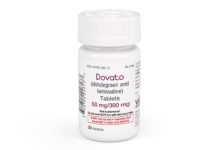PARIS — The last time the International AIDS Society Conference on HIV Science met in 2003, fewer than 2 million people globally were on HIV treatment. As the event returned to Paris this week, UNAIDS reported 19.5 million people are now taking antiretroviral therapy, or ART.
The numbers put the world on track to reach 30 million people on treatment by 2030 — a critical benchmark to actually end the AIDS epidemic. Life for patients on treatment has also improved; if they stick to the daily treatment, most can be expected to live a near-normal lifespan.
Yet campaigners know that reaching the next 10 million people with treatment will be harder in some ways. These patients are among the most difficult to reach: People living in conflict areas, stigmatized and criminalized populations — like men who have sex with men and sex workers — and young people, leery at the thought of taking HIV medication every day for the rest of their lives.
“We are seeing major progress in epidemics that are heterosexual in nature and we are seeing this mainly happening in adults. It’s unquestionably a huge success,” Luiz Loures, the deputy executive director of the Joint United Nations Programme on HIV/AIDS, told Devex. “But there are several epidemics going on and some of them, they are the same that we saw in the pretreatment era.”
Those split results helped center discussions at this week’s IAS meeting around how to make it easier for patients to access and stay on treatment — key improvements that could help in reaching the most vulnerable. HIV advocates hope that a combination of scientific breakthroughs and experience-informed social outreach can bridge the final gaps in treatment.
Researchers and programmers are specifically thinking about strategies to make it easier for patients in some of the most difficult settings to start and maintain ARTs, as well as to reduce the number of times patients must travel to health clinics to pick up antiretroviral, ARV, drugs. Potential scientific breakthroughs in long-lasting, injectable ARVs may also mean HIV patients would no longer be looking at a lifetime of daily pills, often a deterrent or obstacle for care.
Longer lasting treatment
Among the highest-profile findings presented at the IAS conference were promising results, based on nearly two years of data, on the viability of an injectable HIV treatment. Researchers are testing both four- and eight-week regimens.
The research has drawn great interest from HIV patients and treatment programs looking for alternatives to the daily regimen of pills, especially for young people and adolescents. A shot every four or eight weeks could reduce the risk of skipped doses and help overcome the stigma that comes with keeping large quantities of ARVs on hand.
“It’s been surprising to me in the patients at our site who are on this study how much they appreciate not having to take pills,” said Dr. Joseph Eron, one of the lead researchers on the trial. “That’s something I didn’t really calculate.”
HIV experts are only beginning to consider the possibilities presented by long-lasting injectables. Although they would currently need to be administered by a health worker, the prospect of self-injecting treatment may not be far off. Such a shift could better safeguard patients’ privacy and reduce the time they need to spend accessing ART, both of which may encourage more people to start treatment. Now programmers are waiting for the science to catch up to their ideas.
In the current experimental regimen, “the treatment was very well tolerated,” Eron said. “Patient satisfaction was very high. The injectable regimen is moving on to phase three studies,” with expanded numbers of volunteers enrolled for a longer period.
Patients who were participating in the trial had already started treatment and achieved viral suppression, meaning that while the virus remains in the body, it is nearly impossible to detect. This drastically improves the health of the patient and makes it nearly impossible for him to pass the virus to someone else.
After 96 weeks of study, 87 percent of the patients who were receiving an injection every four weeks remained virally suppressed. That number climbed to 94 percent among people getting a shot every eight weeks. Researchers said they will have a better understanding of which method is most effective and why, after the next round of advanced trials. Yet they caution that despite the promise, injectable ART is far from widespread deployment.
Strategies in the field
With medical breakthroughs still several years from the market, researchers are also looking at innovative ways to deliver existing treatment options in complex situations.
One such example has unfolded in the Yambio region of South Sudan, where HIV prevalence is estimated at 7 percent and even basic health services are limited. Beginning in 2015, Médecins Sans Frontières introduced a roving, mobile service to begin rapid testing patients for HIV. MSF tested more than 13,000 people and had started 344 of the 442 who tested positive on treatment.
Then, toward the end of 2015 and the beginning of 2016, fighting in South Sudan’s civil conflict reached Yambio. The patients were at times cut off from reaching MSF, said Cecilia Ferreyra, an advisor on HIV and tuberculosis for MSF. “They couldn’t reach us and we couldn’t reach them.”
MSF teams stuffed bags with up to three months’ worth of treatment for each patient and passed them off to community health workers, who managed to get them to the majority of patients. As fighting flared, patients did not have to choose between risking their lives to access refills or stopping treatment, which brings a possibility that the virus could rebound or they could develop drug resistance.
As the situation stabilized in early 2016, MSF officials started tracking down the HIV patients. Eight had died because of complications from the disease and more than 60 had disappeared, either because they had been killed or displaced to other regions. But the rest had been able to maintain their treatment through the months-long fighting.
Ferreyra said it was critical to continue working with communities like Yambio to deliver testing and treatment. As a member of a global interagency task team that focuses on providing services in conflict settings, she said MSF is pushing other organizations to introduce their own plans to help patients remain on treatment. South Sudan also brought home the lesson that “wherever you are, you need a contingency plan,” she said.
Continuous care has obvious benefits for the patients, but back up plans for high-risk environments could also help agencies feel more comfortable about expanding their services in these settings, she said.
Staying on track
Even as researchers look at ways to start more people on treatment, they are also collecting evidence on what strategies can encourage patients to stay on ART. IAS devoted several sessions to sharing research on efforts to simplify HIV services to reflect the needs of clients, a method known as differentiated care.
One of the more promising approaches has been to increase the number of ARVs a health worker can prescribe, which dramatically reduces the need for often time-consuming and expensive clinic visits. In 2016, the World Health Organization came out in favor of reduced visits for patients who are stable on ART.
Those recommendations so far do not extend to children and adolescents — simply because there was not enough research on the subject. Dr. Maria Kim with the Baylor International Pediatric AIDS Initiative led one effort to try to shore up that knowledge.
Her team consulted the records of more than 18,000 HIV patients ranging in age from newborns to 19 year olds, who received multimonthly prescriptions. They found a 75 percent adherence rate and a nearly 79 percent rate of viral suppression.
Kim said the findings offer potential lessons to health workers and others doing drug delivery. “Children, if they are stable and have caregivers who are supportive and they’re already adherent for six months, they’re likely to do okay.”
The job now, experts said, is for researchers to keep boosting the evidence so that policymakers can translate tested ideas into action.


 ПОИСК ПО САЙТУ
ПОИСК ПО САЙТУ  поиск по ресурсному центру
поиск по ресурсному центру 



